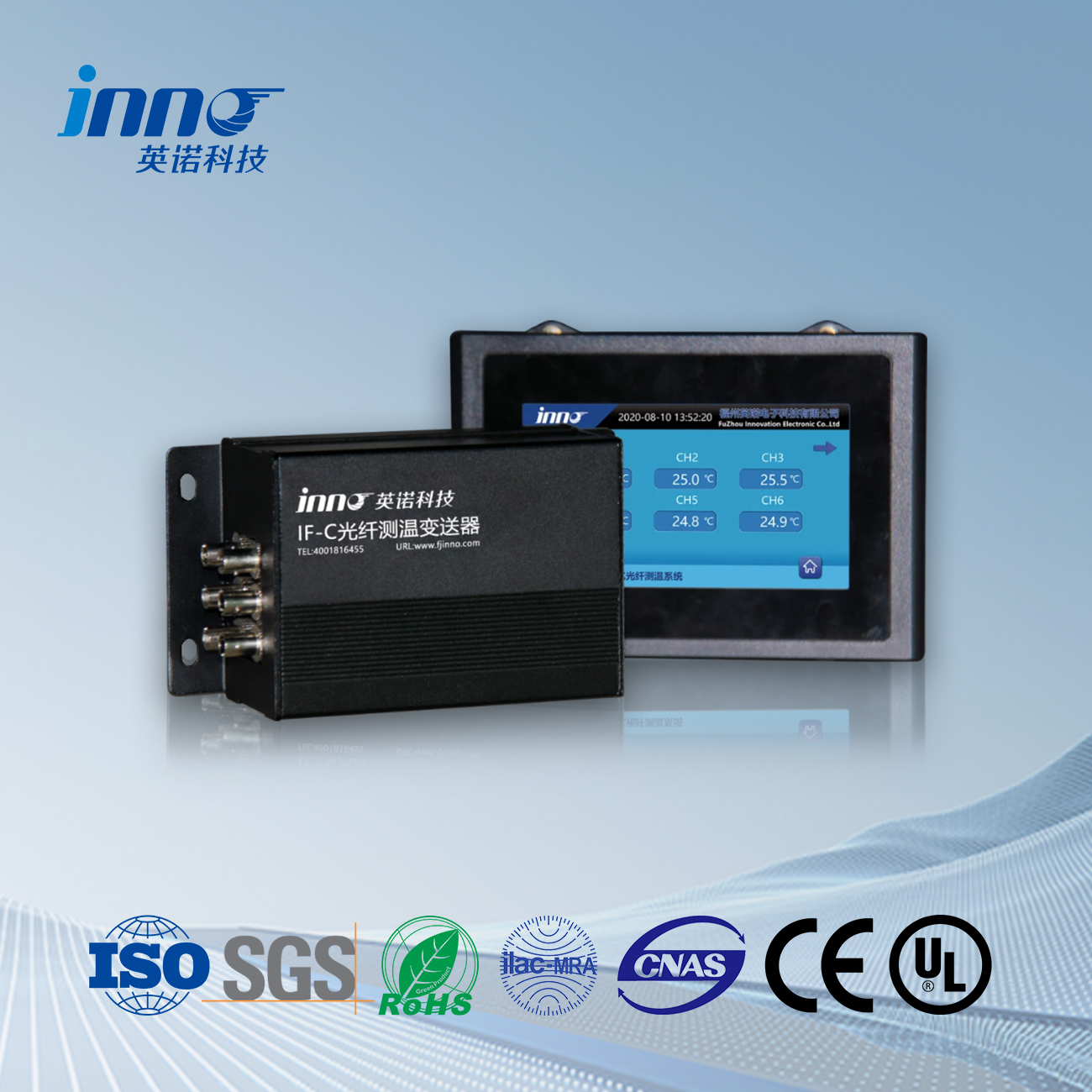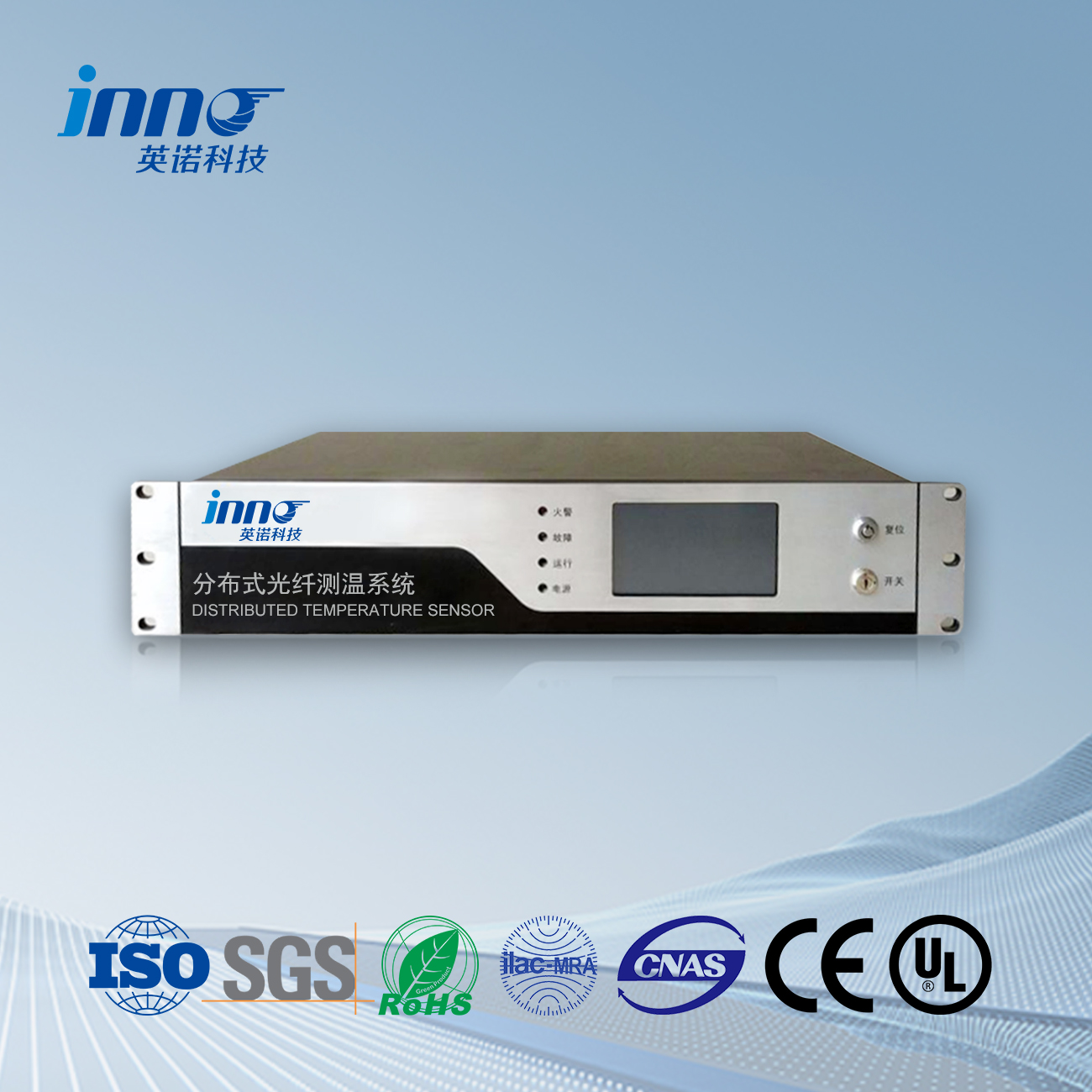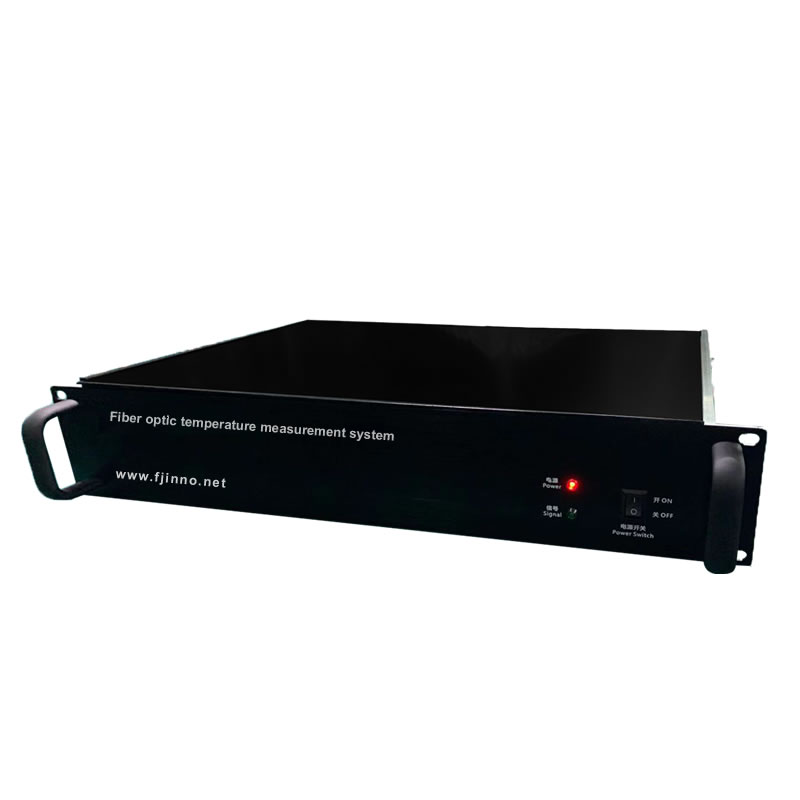In the realm of generator condition monitoring, פיברע אַפּטיק טעמפּעראַטור סענסאָרס (FOTS) have emerged as a game-changing technology. This article provides an in-depth exploration of fiber optic temperature sensors for generator windings, covering their working principles, אַדוואַנטידזשיז, system components, applications, and future development trends.
How Fiber Optic Temperature Sensors Work
Fiber optic temperature sensors for generator windings primarily rely on fluorescence אָדער fiber Bragg grating (פבג) טעכנאָלאָגיע. In fluorescence-based systems, a rare-earth doped fluorescent core is used. When excited by a light source, the fluorescent material emits light, and the decay time of this emission is temperature-dependent. By measuring the decay time, the temperature can be accurately determined.
FBG-based sensors, on the other hand, use a periodic variation in the refractive index of the fiber core to create a grating that reflects specific wavelengths of light. Temperature changes cause the grating pitch to change, altering the reflected wavelength, which is then measured to determine the temperature. For instance, FJINNO’s fiber optic sensors utilize fluorescence technology to achieve precise temperature measurements.
Key Advantages of Fiber Optic Temperature Sensors for Generator Windings
EMI/RFI Immunity
Generators are characterized by high electric and magnetic fields. Traditional temperature sensors like resistance temperature detectors (Rts) און טהעראָקאָקס are prone to electromagnetic interference (EMI) און radio frequency interference (RFI), leading to measurement inaccuracies. Fiber optic temperature sensors, being non-metallic and non-magnetic, are immune to EMI/RFI, ensuring reliable temperature measurements in high-voltage environments.
Direct Hotspot Temperature Measurement
Generator winding hotspots are often located deep within the windings, making them difficult to access. Traditional sensors struggle to provide accurate temperature measurements of these critical points. פיברע אַפּטיק סענסאָרס can be embedded directly into the windings, enabling real-time monitoring of hotspot temperatures and providing a more accurate assessment of winding insulation conditions.
Fast Response Time
Fiber optic temperature sensors can quickly respond to temperature changes, especially during sudden load variations. This rapid response allows for timely detection of overheating issues, enabling operators to take immediate action and prevent damage to the generator.
Long-Term Stability and Accuracy
Fiber optic temperature sensors offer high long-term stability and measurement accuracy, typically with an accuracy of ±1.0°C or better. They can maintain their performance over the generator’s lifespan without requiring frequent calibration.
Compatibility with Smart Grids
Fiber optic temperature sensors can be integrated with smart grid systems. They provide real-time temperature data that aids in optimizing generator operation, improving grid reliability, and supporting dynamic load management.
System Components of Fiber Optic Temperature Sensors for Generator Windings
Fiber Optic Probes
The core component of the system, פיברע אַפּטיק פּראָבעס are designed to withstand the harsh environment within generators. They are typically made of materials with high dielectric strength, such as quartz אָדער polymer fibers coated with protective layers like PTFE, to ensure long-term stability and reliability.
Temperature Transmitters (Signal Conditioners)
These devices convert the optical signals from the fiber optic probes into temperature measurements. They often feature familiar analog outputs און digital buses like רס-485, making integration with existing PLCs and monitoring software straightforward.
Optical Feedthroughs
Installed on the generator’s housing, optical feedthroughs allow the monitoring light signal to travel to the sensor tip and back to the monitor. They ensure a secure and stable optical connection while maintaining the generator’s insulation performance.
Signal Processing Units
די signal processing unit is responsible for processing the temperature data from the fiber optic probes. It performs tasks such as signal amplification, filtering, און digitization, converting the optical signals into usable temperature data.
Monitoring Software
Advanced monitoring software collects, analyzes, and displays real-time temperature data from the fiber optic temperature sensors. It can also perform functions like data logging, SCADA interconnection, and generating alarm signals when temperature thresholds are exceeded.
Applications of Fiber Optic Temperature Sensors in Generator Windings
Monitoring Stator Winding Temperatures
The primary application of פיברע אַפּטיק טעמפּעראַטור סענסאָרס in generator windings is monitoring stator winding temperatures. By accurately measuring the temperature at the hottest spots in the stator windings, operators can assess the insulation aging condition of the generator and optimize its operating load to extend its service life.
Detecting Overheating Faults
Fiber optic temperature sensors can quickly detect overheating faults in generator windings. When a generator experiences overload or malfunction, the temperature at certain points will rise rapidly. The sensors can promptly detect these temperature increases and send alarm signals to enable timely maintenance and repair, preventing faults from escalating and avoiding costly equipment damage and power outages.
Supporting Dynamic Loading of Generators
With real-time temperature data provided by פיברע אַפּטיק טעמפּעראַטור סענסאָרס, operators can dynamically adjust the generator’s load based on its actual temperature conditions. This allows generators to operate at higher loads while ensuring winding temperatures remain within safe limits, thereby improving the generator’s utilization efficiency און economic benefits.
Installation and Commissioning of Fiber Optic Temperature Sensors
Installation During Generator Manufacturing
Fiber optic temperature sensors are typically installed during the generator manufacturing process. Probes are strategically placed adjacent to the hottest spots in the windings, usually within key spacers. Each fiber probe is then routed through the generator housing to the weld-on flange plate, where the fibers exit the housing and connect to the monitoring system.
Commissioning and Calibration
After installation, the fiber optic temperature sensor סיסטעם must be commissioned and calibrated to ensure accurate temperature measurements. This involves checking the connections between the sensors and the monitoring system, verifying the functionality of the monitoring software, און calibrating the sensors using standard temperature sources to ensure measurement accuracy.
Case Studies and Application Examples
FJINNO’s Fiber Optic Temperature Sensors
FJINNO’s fiber optic temperature sensors have been widely adopted in medium and high-voltage generator equipment. Their sensors can be installed where high-voltage and alternating electromagnetic fields pose problems for traditional RTD winding sensors. By inserting fiber sensors between the windings of motors and generators, continuous temperature measurement is enabled to protect insulation and extend maintenance schedules. Operators can monitor load conditions in real-time, maximizing energy and economic efficiencies.
Application in Hydropower Generators
אין די לעצטע יאָרן, פיברע אַפּטיק טעמפּעראַטור סענסאָרס have been increasingly applied in hydropower generators. פֿאַר בייַשפּיל, some new hydropower stations have incorporated fiber optic temperature monitoring technology into their generator stator temperature online monitoring systems from the outset of construction. During the design and production of the generator, fiber optic sensors are embedded in the stator windings. This allows for real-time monitoring of stator winding temperatures, providing accurate temperature data to ensure the safe and stable operation of the generator.
Future Development Trends
Technological Innovation and Performance Improvement
Ongoing research and development will focus on enhancing the performance of פיברע אַפּטיק טעמפּעראַטור סענסאָרס, such as improving מעאַסורעמענט אַקיעראַסי, reducing response time, and increasing sensor durability and reliability. New types of fiber optic temperature sensors based on advanced materials and technologies will emerge to meet the diverse needs of generator winding temperature monitoring.
Integration with Intelligent Generator Systems
As the smart grid continues to develop, פיברע אַפּטיק טעמפּעראַטור סענסאָרס will become an integral part of intelligent generator systems. They will be deeply integrated with other sensors and monitoring devices to provide comprehensive information on generator operating conditions. This integration will enable intelligent diagnosis and analysis of generator status, supporting the realization of unattended substations און automated grid operations.
Cost Reduction and Wider Application
איצט, the cost of פיברע אַפּטיק טעמפּעראַטור סענסאָרס is relatively high, limiting their widespread adoption to some extent. אין דער צוקונפֿט, with technological advancements and economies of scale, the cost of fiber optic temperature sensors is expected to decrease gradually. This will promote their broader application in generators of various voltage levels and capacities, driving the development of the generator monitoring market.
פיברע אַפּטיק טעמפּעראַטור סענסער, ינטעליגענט מאָניטאָרינג סיסטעם, פונאנדערגעטיילט פיברע אַפּטיק פאַבריקאַנט אין טשיינאַ
 |
 |
 |
 INNO פיברע אַפּטיק טעמפּעראַטור סענסאָרס ,טעמפּעראַטור מאָניטאָרינג סיסטעמען.
INNO פיברע אַפּטיק טעמפּעראַטור סענסאָרס ,טעמפּעראַטור מאָניטאָרינג סיסטעמען.

